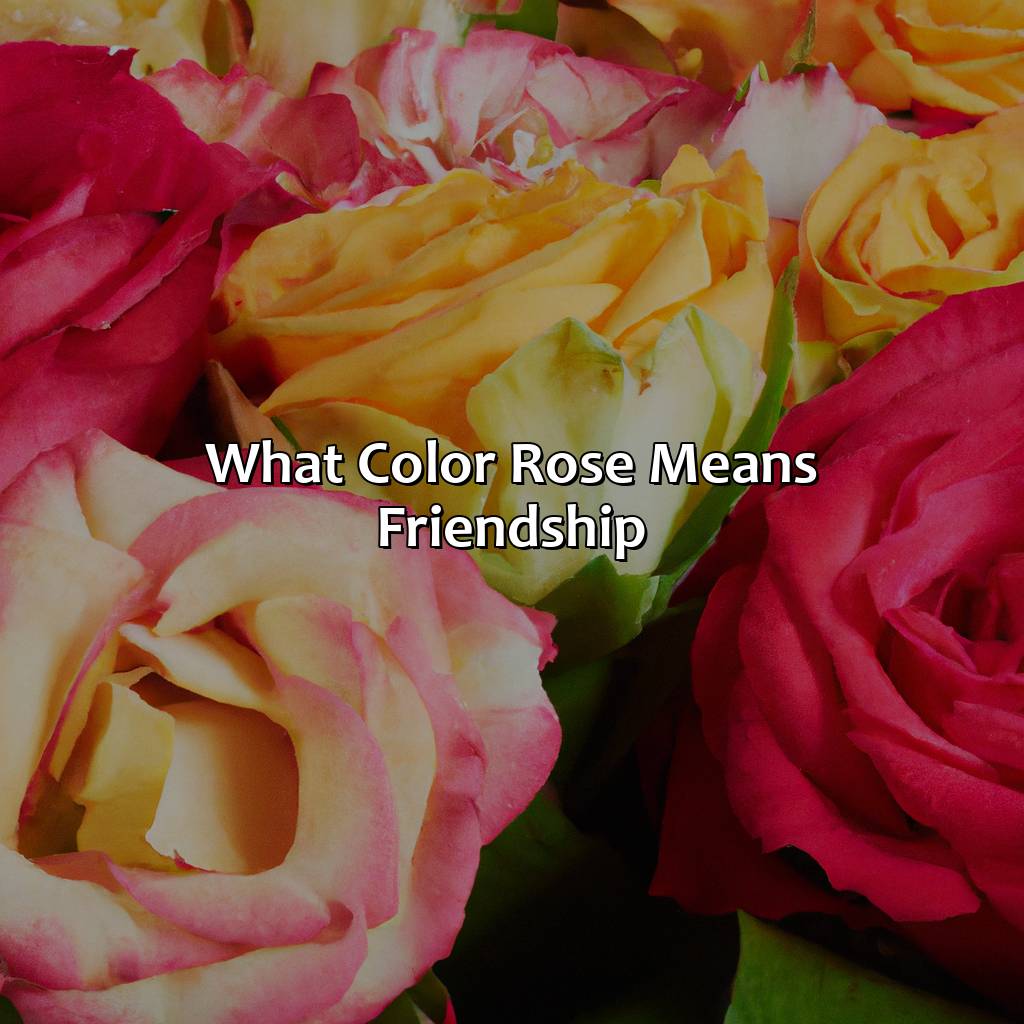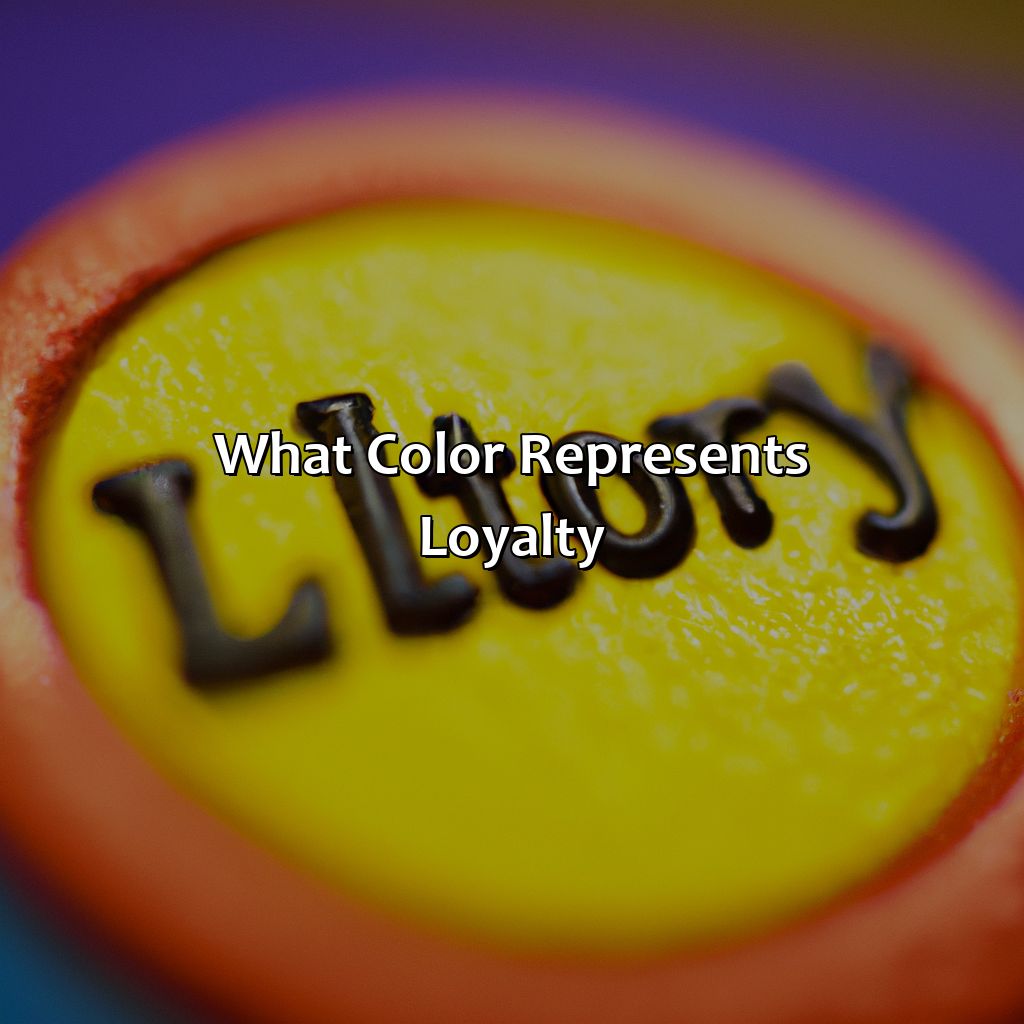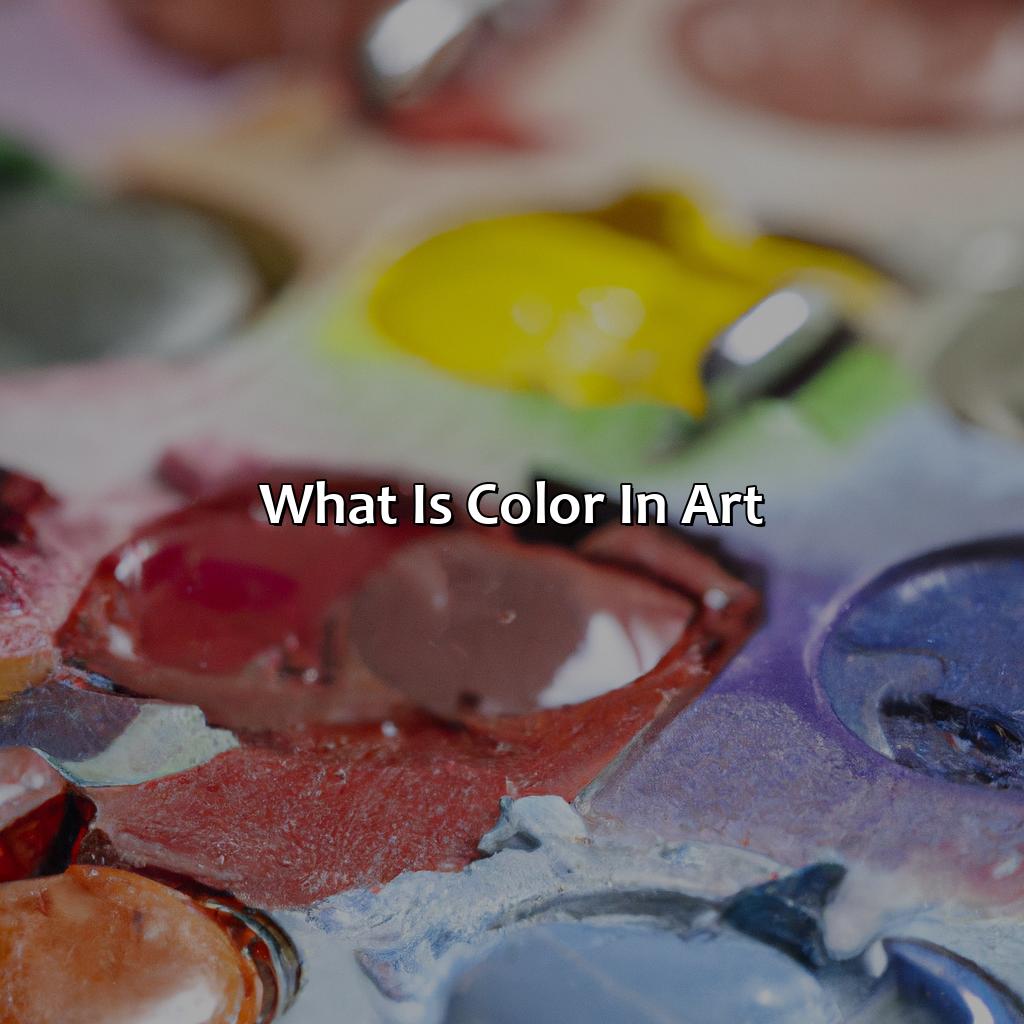Key Takeaway:
- Crimson is a deep, dark shade of red that can also be bright and light, with hues ranging from reddish purple to orange-red.
- Crimson has a rich history dating back to ancient times, where it was used in clothing, textiles, and artwork. In modern times, it is often associated with power, passion, and love.
- The physical characteristics of crimson include RGB values ranging from 220 to 20 and CMYK values of 0, 90, 80, 5. The appearance of crimson can vary depending on lighting conditions, appearing brighter or darker in different settings.
- Crimson has significant cultural and psychological significance, with meanings and symbolism associated with love, passion, and courage. It is often used in art, fashion, and design to convey intensity and sophistication.
- There are various shades and names of crimson, including dark crimson, Imperial red, and firebrick, with similar colors including maroon, burgundy, and scarlet.
Overview of Crimson Color
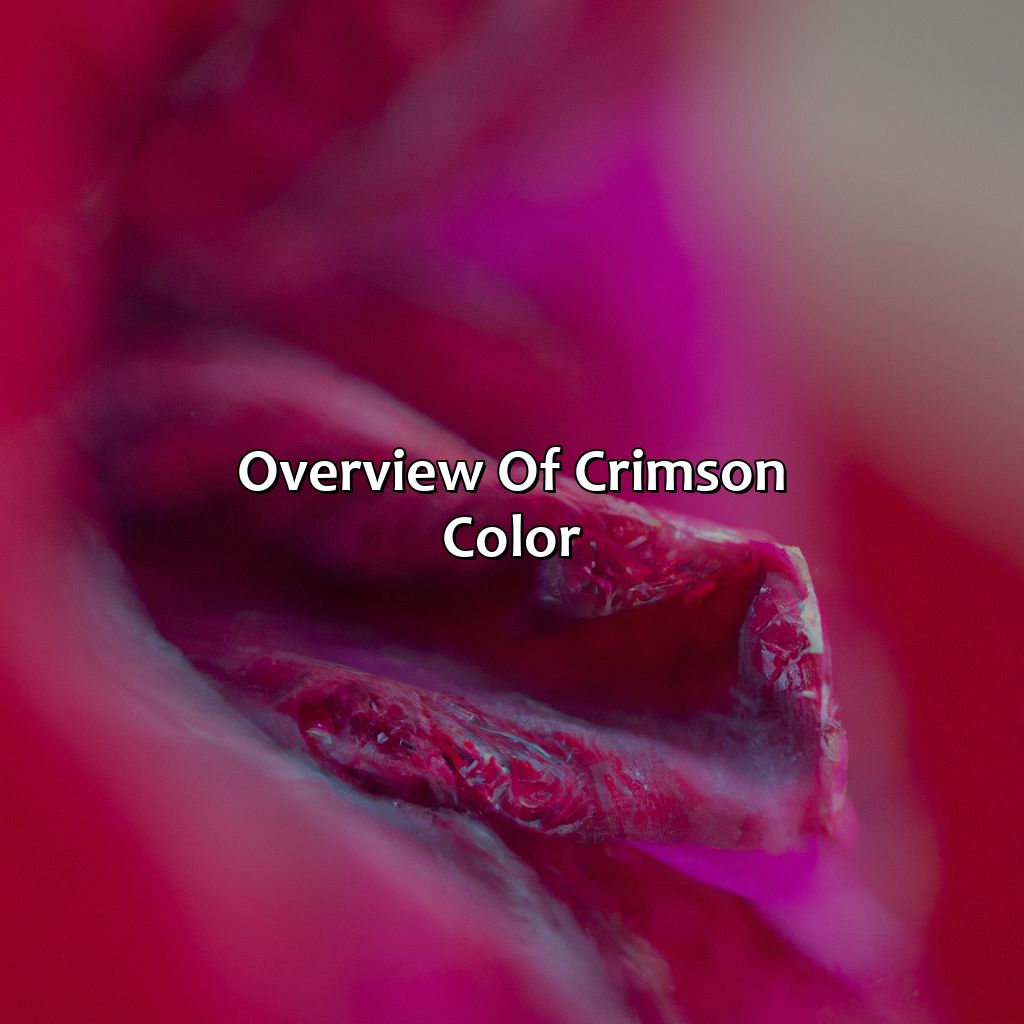
Photo Credits: colorscombo.com by Walter Brown
Gain understanding of the subtle shades of red? Dive into the overview of this article – “What color is crimson.” You’ll find the definition and learn about all the different shades – dark, bright, deep and light.
Definition of Crimson Color
Crimson, a deep red color with blue undertones, is often described as a sophisticated hue that demands attention. It falls within the red color family and is known for its boldness and intensity. Its definition could be described as a shade of dark red that leans towards blue rather than orange. This color is popular in various fields such as fashion, art, and sports teams.
Crimson color is often used to denote passion, love, courage, and power. It has cultural significance in many countries such as China where it represents good luck and happiness. Crimson has been used in art throughout history to add drama and depth to paintings, evoking emotion in the viewer.
The earliest use of crimson can be traced back to ancient times when natural dyes were used to create this vibrant shade. The word “crimson” originated from the Old Spanish term “cremesin”, which means “worm-colored”. The initial dye was made by crushing the dried bodies of scale insects called Kermes vermilio found mainly on oak trees.
Overall, the definition of crimson color revolves around it being a dark red hue that leans towards blue instead of orange. It has been used throughout history in various cultures and has symbolic meanings attached to it. Despite the evolution of technology and synthetic dyes today, natural crimson dye is still produced using insects in some parts of the world.
From regal robes of ancient rulers to modern-day fashion statements, crimson color has a rich history of making bold statements.
Origin and History of Crimson Color
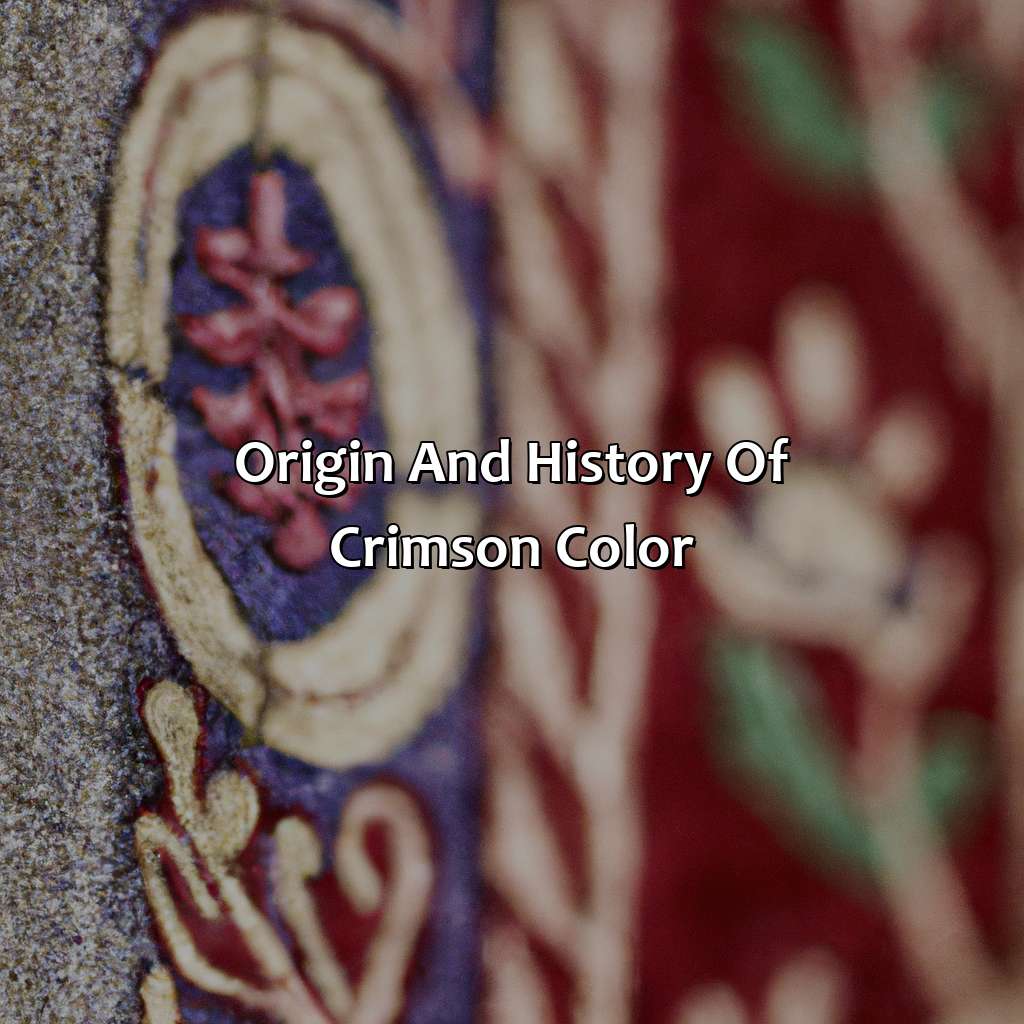
Photo Credits: colorscombo.com by Patrick King
To comprehend the source and chronicle of crimson color, delve into the implementation of crimson in ancient times plus the advancement of crimson hue in modern times. Ancient use of crimson has a fascinating story to tell about the color’s importance. In addition, modern-day evolution of crimson is an intriguing reflection of transforming opinions towards the shade.
Use of Crimson in Ancient Times
Crimson Color’s Role in the Past
In ancient times, prior to modern technology, producing crimson was a time-consuming and laborious task. It required soaking female cochineal insects in water to extract their carmine dye. The dye also had religious significance as it was used by the Maya people in Central America to paint human sacrifices. It was also incorporated into ancient Egyptian funeral rituals and was worn by Roman generals during military conquests as a symbol of power and victory.
Centuries later, during the Renaissance era, crimson pigments became more widely available due to improved technology and trade routes. The color was highly valued among aristocrats for its richness and regal connotations.
Insights on Crimson Color in Fashion
Crimson has been a popular choice in fashion throughout history due to its association with royalty and elegance. Crimson gowns were worn by queens and princesses since they symbolized power and sophistication. In the film industry, crimson is often used to evoke passion or danger.
One suggestion for incorporating crimson into fashion or design is using it as an accent shade rather than a dominant one to make an outfit pop while not being overpowering.
Crimson has evolved over modern times, like a chameleon with a paintbrush.
Evolution of Crimson Color in Modern Times
The color crimson has undergone significant changes in modern times, starting from the 19th century when synthetic dyes were invented. French chemist Emil Auguste Verguin discovered a new synthetic dye in 1858, which he named “alizarin,” and it became popular quickly. Crimson began to be used more frequently in western fashion, especially for women’s dresses that were brightly colored and intricate. Additionally, advancements in printing technology allowed for mass production of prints with crimson as the prominent color.
The evolution of crimson color in modern times resulted in a shift towards more muted tones of the color alongside the rise of sleek, minimalist design. This led to the creation of different shades like dark crimson and deep maroon to replace the brighter and more vivid tones that were previously popular.
Furthermore, there was also a significant influence on crimson through Hollywood films that highlighted its association with love and passion. This cemented its status as an iconic romantic color globally.
It’s interesting to note that even today, designers use modern technologies like computer-aided design software to create intricate patterns using different shades and gradients of crimson meticulously.
Crimson, the color of passion and power, is defined by its RGB and CMYK values and can appear differently in various lighting conditions.
Physical Characteristics of Crimson Color
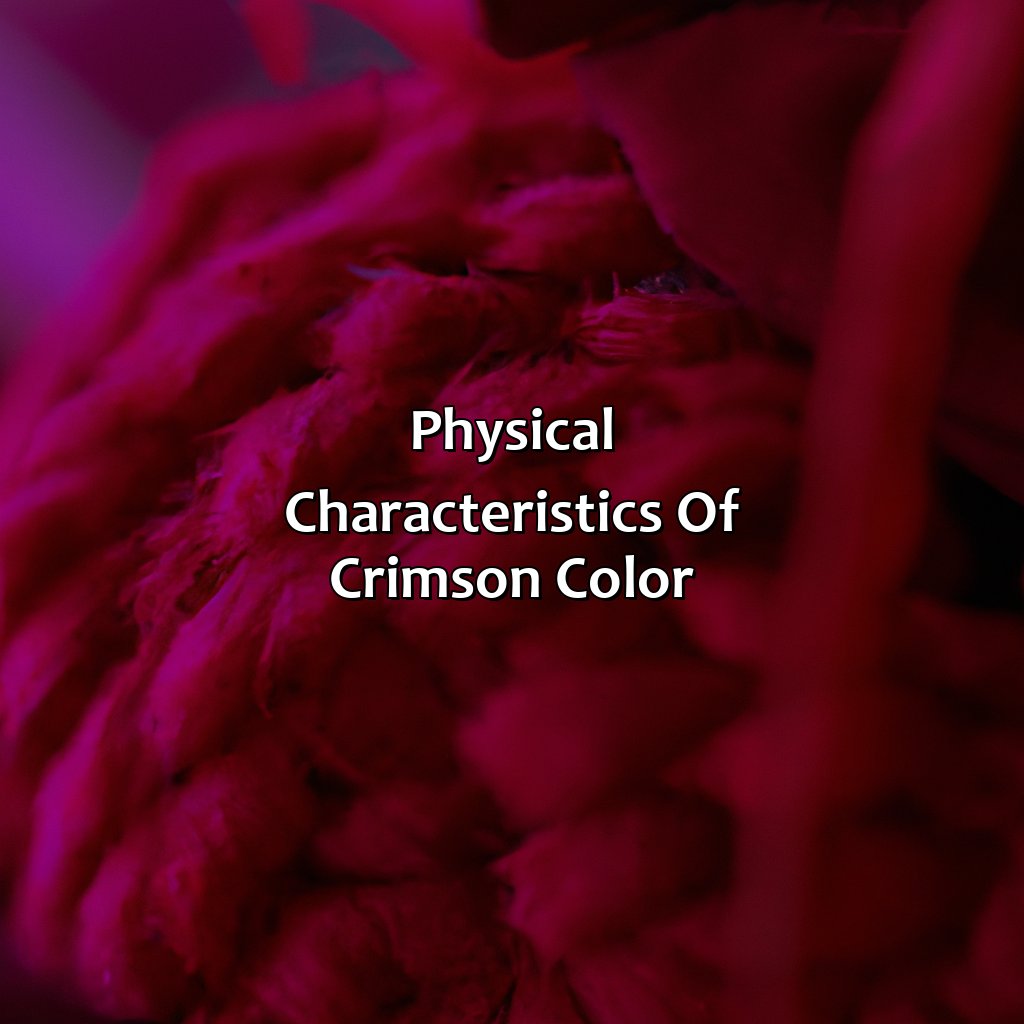
Photo Credits: colorscombo.com by John Clark
To know the physical features of crimson, explore its RGB and CMYK values. Also, find out how it looks in different lighting. These characteristics affect how crimson is seen in different surroundings.
RGB and CMYK Values of Crimson
For professionals looking to leverage the power of Crimson in their designs, understanding its RGB and CMYK values is crucial. Here’s an overview of this iconic color:
| Color | RGB Values | CMYK Values |
|---|---|---|
| Crimson | 220, 20, 60 | 0, 91, 73, 14 |
As shown in the table above, crimson has a shade of red with a little bit of blue mixed in. When it comes to printing and design work, knowing these values will ensure that your colors come out as accurately as possible. The RGB values are used primarily for digital displays such as websites and computer monitors. The CMYK values are used for printing purposes and refer to the amount of cyan, magenta, yellow and black pigment required.
It’s important to note that different lighting conditions can affect the appearance of crimson color. For example, under natural sunlight conditions or fluorescent light bulbs it may appear slightly different than it does under incandescent lighting.
For those who want to use crimson in their designs or branding efforts – consider using complementary colors like golden yellows or navy blues to create a stunning sense of contrast. This will help make your brand stand out while still maintaining an air of professionalism.
By understanding the RGB and CMYK values associated with crimson color – designers can effectively incorporate it into their work while ensuring accuracy in all mediums.
From sultry and mysterious to vibrant and bold, crimson color shines in any lighting.
Appearance of Crimson Color in Different Lighting Conditions
Crimson color has a distinct appearance that changes depending on the lighting conditions it is viewed under. The fiery red hue of crimson can appear darker or lighter in different settings, giving it versatility in its visual impact. In bright natural light, crimson appears a vibrant red, while in low light conditions, it can take on a deeper maroon hue.
With the application of technology to color representation, RGB and CMYK values can be used to determine the specific shade of crimson to be produced. Using these values, designers and artists can ensure that their intended coloring is achieved regardless of lighting conditions.
What’s more, Crimson color also possesses cultural significance across borders; it symbolizes passion and royalty in Western cultures versus mourning in South Africa. These differences highlight how variations in meaning can evolve through time and explain why appearances are significant to understanding different cultures’ use of this color.
One interesting fact is that Egyptian women used to crush up bugs as an ingredient for dyes that produced what we now know as ‘crimson.’ Although this might sound unappealing now when we look at modern-day artificial dyes with ingredients such as beetle shells, roasted beet juice or tree bark extracts indirectly derive from this phenomenon. Crimson may be just a color, but its psychological and cultural significance in art, fashion, and design is a sight to behold.
Psychological and Cultural Significance of Crimson Color
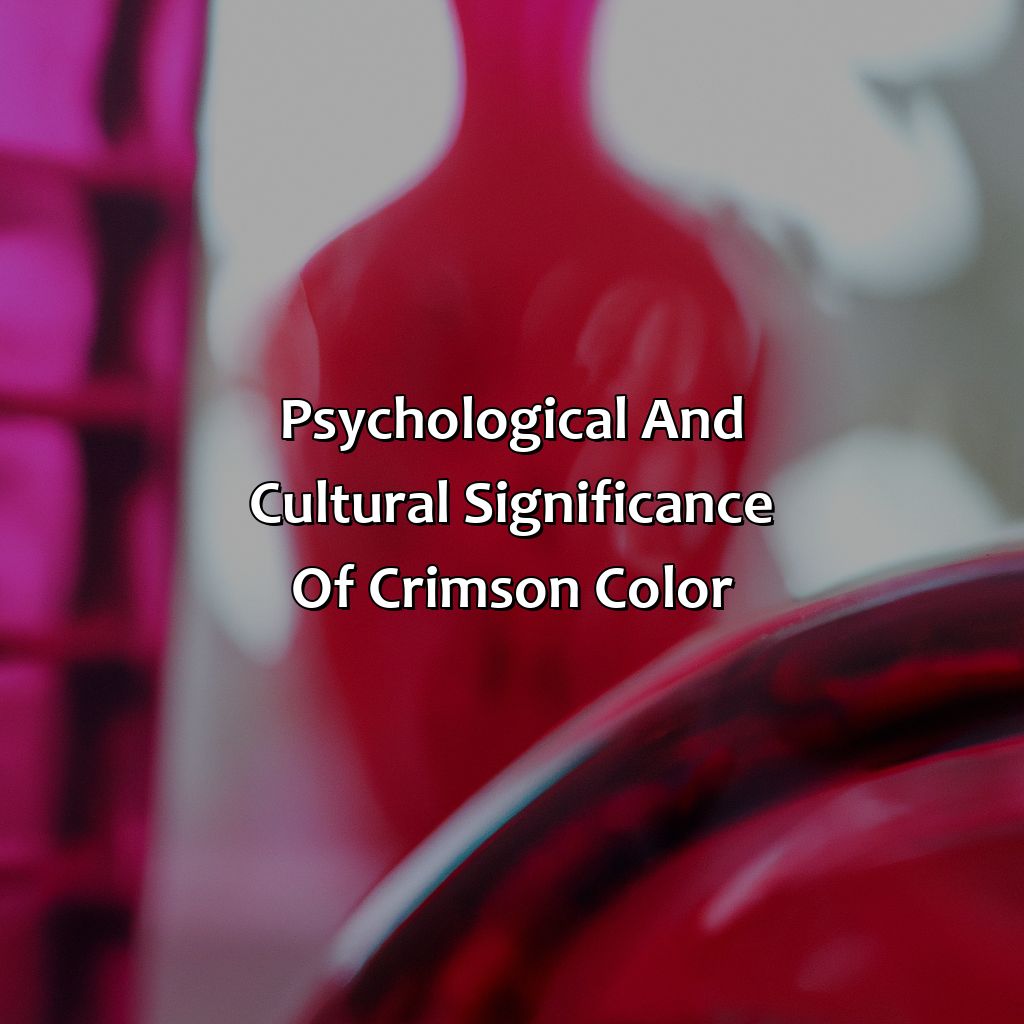
Photo Credits: colorscombo.com by Kevin Ramirez
Investigate crimson color’s psychological and cultural importance. Understand its meanings, symbolism and use in art, fashion and design. Uncover the hidden meanings of crimson by exploring the ‘Meanings and Symbolism Associated with Crimson’ section. Delve into the ‘Use of Crimson in Art, Fashion, and Design’ part to understand its significance in creative areas.
Meanings and Symbolism Associated with Crimson
Crimson color has significant meanings and symbolism attached to it, making it a popular choice for various artistic expressions. The color is widely associated with passion, love, and desire. Crimson is often used to express powerful emotions and sentiments in art, fashion, and design. It is also related to royalty, power, and wealth due to its deep red shade.
In many cultures, crimson symbolizes bravery and courage. In medieval times, knights wore crimson garments over their armor as a sign of valor. Similarly, in China, crimson was believed to ward off evil spirits and bring good fortune. Crimson has been a prevalent color in religious contexts as well and represents sacrifice and redemption.
The use of crimson in different industries depends on cultural beliefs as well as fashion trends; for instance, the fashion industry associates crimson with passion and boldness. On the other hand, interior designers may use this hue in minimalistic designs contrasted against neutral shades or paired with monochromatic schemes.
To incorporate the rich symbolism offered by the crimson hue effectively, one should be mindful of context while applying it. For example, using too much crimson can overwhelm visual space while insufficient usage might not convey desired messages effectively. Thus a versatile approach must be practiced towards incorporating this beautiful color into one’s expression.
Why settle for red when you can have the sophistication of crimson in your art, fashion, and design?
Use of Crimson in Art, Fashion, and Design
Crimson color has been an indispensable part of the art and design industry for years. From fabric to laquerware, crimson has dominated the fashion and design world. In art, it is a shade that represents masculinity, blood, passion, and love. Crimson is vividly used in landscapes to represent summer or fall. The color also indicates luxury, royalty and good fortune in design settings. Moreover, crimson is typically used in classic home decor elements such as draperies and carpets to give an elegant touch.
In fashion, crimson has been a trendsetter for decades. It has always been considered highly fashionable among designers. Crimson can be worn by anyone regardless of style preference or occasion- whether it’s casual jeans or formal evening gowns. Crimson in clothing evokes feelings of confidence and power; it’s commonly used in winter collections starting from scarves to gloves.
Apart from art and fashion industries, interior designers heavily rely on this particular hue too. Adding crimson-colored decorative pieces brightens up the room while simultaneously adding sophistication and warmth.
It’s interesting to note that history plays a pivotal role in enabling us to understand why this color associates itself with all areas mentioned above so intimately- royal coats of arms commonly bear crimson garnishes representing regal authority– these traditions play a significant role in shaping our perceptions of such hues.
Why settle for plain old red when you can have a plethora of shades and names to choose from with Crimson?
Variations and Shades of Crimson Color
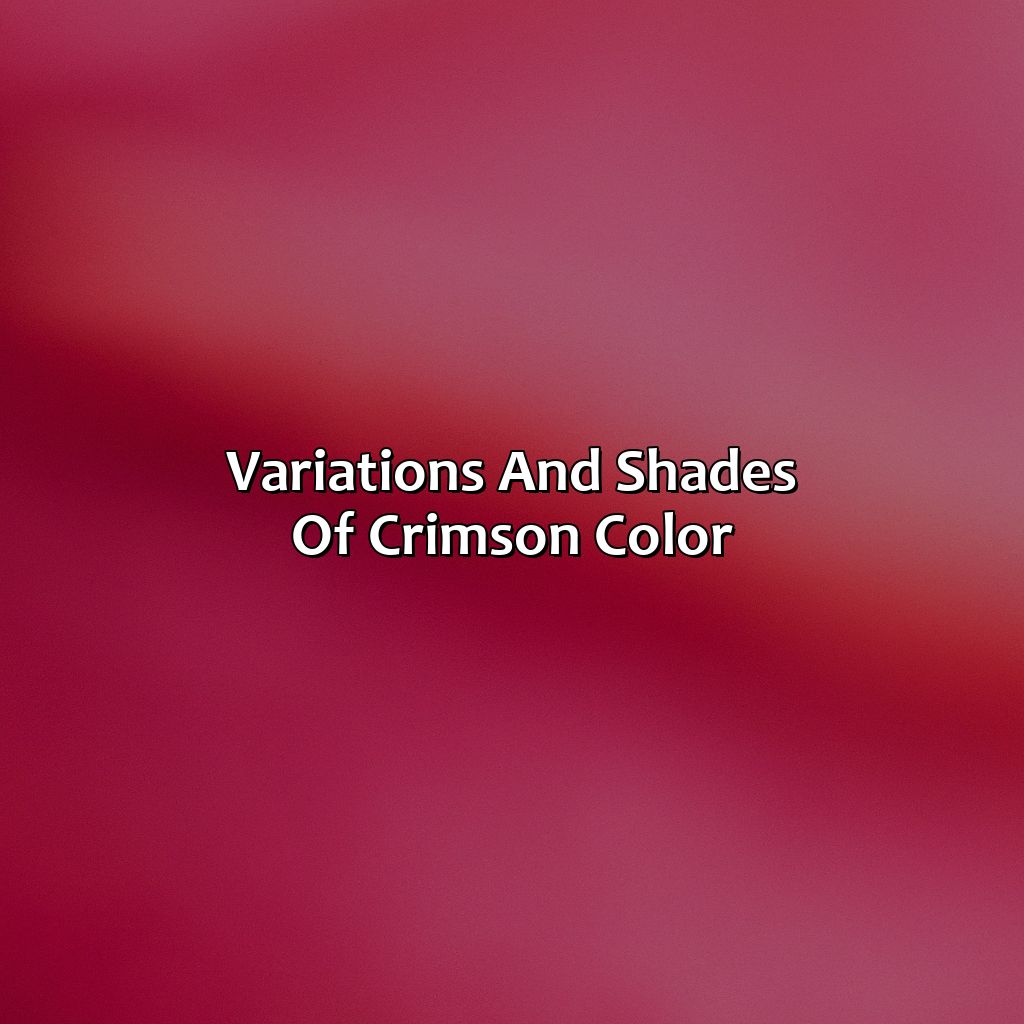
Photo Credits: colorscombo.com by Kyle Campbell
Let’s explore two sub-sections to talk about crimson colors and their shades. The first section will discuss the different hues of crimson and their names. The second section will focus on colors that look similar to crimson, but are not the same.
Different Shades of Crimson and their Names
Crimson has several shades, each with its unique name, making it a versatile color that adds exceptional beauty to any project.
- Alizarin Crimson: A deep red shade with a blue tint
- Fire Engine Red: A bright red shade inspired by fire trucks
- Burgundy: A dark-red shade similar to wine
- Carmine: A reddish-pink shade used in coloring foods and cosmetics
Each shade has its use and specific appeal. Carmine, for instance, is commonly used in makeup and the food industry due to its versatile nature. On the other hand, Fire Engine Red is ideal for creating a vibrant look that demands attention. It’s essential to know the different names of crimson shades since they all have unique applications.
The right knowledge of crimson’s various shades is crucial when working on a project that requires a specific look or theme. Incorporate the ideal tone of Crimson into your designs today. Indulge Inspiration Through Crimson Shade Variations Now! Why settle for imitations when crimson is the real deal?
Colors that are Similar to Crimson but Not Crimson
Colors that Resemble Crimson but are Not Crimson
Some colors may look similar to crimson, but they differ quite a bit in their appearance. These colors share the same intensity and warmth as crimson, but they have their unique attributes. Some colors that resemble crimson but are not crimson include:
- Scarlet is more vivid than crimson.
- Ruby is more intense and deeper in color.
- Maroon has more brown undertones compared to crimson’s red-violet tone.
- Burgundy has a wine-red hue.
It is essential to distinguish between these intense and warm colors as it can affect the overall ambiance of any design or artwork that uses them. Additionally, mixing up two such similar shades may result in an unintended outcome.
Pro Tip: Mix and match these different hues together to create compelling visuals with varied tones of red that set your designs apart from others.
Five Facts About the Color Crimson:
- ✅ Crimson is a deep red color with a slight touch of blue. (Source: Color Hexa)
- ✅ The word “crimson” originates from the Old Spanish word “carmesí,” which means “of or pertaining to the kermes” (Source: Wikipedia)
- ✅ Crimson was a popular color for dye in ancient times, obtained from a scale insect called kermes. (Source: Color Matters)
- ✅ The color crimson is used in the branding of several universities and sports teams, such as Harvard and the Oklahoma Sooners. (Source: Branding Strategy Insider)
- ✅ The color crimson has been associated with royalty, power, and wealth throughout history in many cultures. (Source: Bourn Creative)
FAQs about What Color Is Crimson
What color is crimson?
Crimson is a deep, rich red color. It is sometimes described as a perfect blend of red and purple.
Is there any difference between crimson and red?
Yes, crimson is a specific shade of red that has a slightly cooler, bluish undertone. In contrast, traditional red has a warmer, orangey undertone.
What other colors can be paired with crimson?
Crimson can be paired well with other warm colors such as orange and yellow, as well as cooler colors such as blue and green.
What are some common uses of crimson?
Crimson is often used in sports teams’ uniforms, college and university branding, and formal apparel. It is also a popular choice in home decor, particularly in textiles and accents.
Can crimson be used in a minimalist color palette?
Yes, crimson can be incorporated into a minimalist color palette as a bold accent color or used sparingly as a focal point. Pairing it with neutrals such as white, gray, or black can create a modern and sophisticated look.
What emotions and moods does the color crimson evoke?
Crimson is often associated with power, confidence, passion, and intensity. It can also evoke romantic and luxurious feelings, making it a popular choice for special occasions.


